
 |
|
|
|
1950's Try and Get Me! has never been an easy film to see. Its only home video release is a Republic Home Video VHS from 1990. It's both a socially conscious tract against lynching, and one of the most pessimistic, frightening films noir from the classic period. It encourages examination from several angles. Its director was blacklisted. It was released as The Sound of Fury late in 1950, and underwent a title change while in its initial run. No official reason is given, but the title might have been uncomfortably similar to MGM's 1936 film Fury, which is loosely based on the same factual incident. 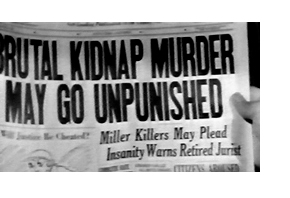
Not unlike Jules Dassin of Night and the City, versatile director Cyril (Cy) Endfield was just getting his career in motion when the blacklist made him unemployable in Hollywood. Endfield would later achieve success in England directing, writing or producing tough minded pictures like Hell Drivers, Zulu, Sands of the Kalahari and Zulu Dawn.
Try and Get Me! was filmed on location in the Phoenix area. Unemployed Howard Tyler (Frank Lovejoy) already has one young boy. His wife Judy (Kathleen Ryan) is anxious for him to find a job soon so she can see a doctor to deliver her second child. Demoralized by his bleak prospects, Howard falls in with Jerry Slocum (Lloyd Bridges), a narcissistic braggart who lures him with promises of easy money: "Getting any other offers lately?" Howard drives the getaway car in
A social horror movie for depressed times, Try and Get Me! is not recommended for everybody -- its emotions run high even before the crime and kidnap story gets in gear. Howard Tyler's unemployment experience is sheer misery and humiliation, death in small doses. It hurts when his kid asks for money to go to a ball game. He can't possibly tell his wife how hopeless things have become. The neighbors' new television is just more evidence of Howard's failure. 
Author-screenwriter Jo Pagano indicts American society as aloof to the needs of working class citizens in dire economic straits -- the Land of Riches doesn't give a damn if Howard's family goes homeless or starves. A bartender sees nothing wrong with charging Howard extra for a grade of beer he didn't order. The situation is emasculating, especially with the preening, suppressed homoerotic Jerry showing off his muscles and asserting his superiority. The film's key image shows Howard unable to sleep, standing in the dark staring out the window. He's a criminal; he knows that he'll be caught sooner or later. Howard Tyler loses what's left of his judgment and dignity, and the sordid trap becomes tighter. Unable to tell Judy the truth, he turns to the pathetic Hazel, a wallflower who thinks she's found the love of her life. Howard's personality disintegrates as the story races to a finish devoid of redemption. Judy Tyler can only wail, "Oh Honey ... what have you done?" Tyler's son witnesses the arrest. He bolts upright in bed with a nightmare, traumatized like the kid from Invaders from Mars three years later. 
Jo Pagano's second thesis is that law abiding, "decent" Americans are easily stampeded into savage acts. He based his story on a true incident from the Depression year1933. Two suspects in a kidnap-murder were openly lynched before a huge mob, not somewhere in the South but in San Jose, California. The mob action was triggered by sensationalized newspaper coverage suggesting that the suspects were going to be set free on a technicality. Towns for miles around emptied out to attend the hanging. Despite an early warning, California's governor refused to reinforce the local police. He then praised the vigilantes in interviews. Unlike Fritz Lang's 1936 Fury, Endfield's Try and Get Me! closely follows the true incidents, including the fact that college students were key participants in the lynching violence. Nowhere is the horror of lawlessness so graphically represented: in full view of their neighbors and hundreds of strangers, citizens defy the civil authority: "There's no law against what's right!" 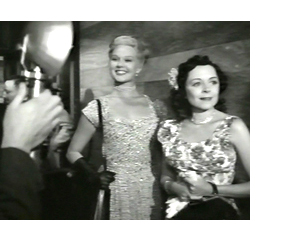
Try and Get Me! also contains a socially-conscious argument for civic responsibility. The secondary hero of the story is Gil Stanton (Richard Carlson), a newspaper columnist set up as an obvious audience surrogate. At first unforgiving of Howard Tyler, Gil meets the despondent Judy and shifts his column to a more understanding tone. Everybody resents him except the Sheriff. Gil's publisher (Art Smith) takes over and continues to churn out the provocative headlines that keep his papers selling out three times a day. Velma and Hazel become the pawns of the publicity machine, and pose smiling for photos in the courthouse. Injected into the screenplay is a character out of left field, an Italian mathematician-sociologist (Renzo Cesana) who appears at regular intervals to lecture Gil and others on social responsibility. His erudite but superfluous harangues are the epitome of weepy liberal pleading -- "environmental factors" are responsible for the "breakdown of social decency". It's understandable that conservatives would consider the speeches obvious propaganda, especially when delivered by a man who is both an intellectual and a (gasp) foreigner. Actually, Cesana's speeches contradict the film's true message. Howard Slocum isn't an underprivileged slum kid denied a moral upbringing, he's a desperate man pushed aside by the economy. The body of the movie faults society's emphasis on material success and conspicuous consumption. Howard goes bad trying to keep up with a rat race he can never win. 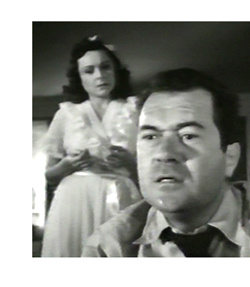
This confusion hurts Try and Get Me!'s chances for classic status, the same way that a vague ending hurts the otherwise ferocious race-riot movie The Well. The question is, were these early 1950s pictures damaged by Production Code pre-censorship? It's difficult to tell. Although Lang's Fury and Wellman's The Ox-Bow Incident remain the classic lynch law movies, Pagano and Endfield's film is much closer to historical reality. There's no denying the power of Try and Get Me!, which begins with a blind street revivalist preaching at full pitch: "Why do you do the things you do? Why?!" The actual "Sound of Fury" is the roar of the mob, which transforms society into a savage animal. Howard Tyler and Jerry Slocum are dead-to-rights guilty yet wholly undeserving of their barbaric fate. Howard collapses into psychic agony, and Jerry fights back like a rabid dog. The onrushing mob overwhelms the few deputies and storms the jail. Forget movies where the Sheriff threatens to kill "the first man who steps forward". Doing that would probably result in multiple deaths, including most of the deputies. It's a scene of total horror. The implication is that citizens can be herded and bullied into doing terrible things -- by newspapers, by politicians, by television demagogues encouraging lawlessness: "There's no law against what's right!" 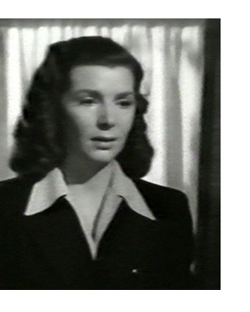
The unfortunate scenes with the Italian busybody aside, Cy Endfield's direction of his actors is superb. 1 The shooting style evolves as the story progresses. Howard Tyler's long days trying to find work are shot in documentary style, but his alcoholic panic attack at the nightclub is highly expressionistic. Endfield was not the only participant to suffer a career interruption. Alleged Communist connections put Lloyd Bridges on bad terms with HUAC until he cleared himself by becoming a friendly witness. A veteran of many socially conscious dramas and films noir, Art Smith was blacklisted after being named and betrayed by his old colleague Elia Kazan. Producer Robert Stillman's early credits include the hard-hitting Champion and Home of the Brave, but he went directly from Try and Get Me! into TV work with Queen for a Day. Talented Frank Lovejoy didn't get many more starring roles, but his very next was in Warners' reactionary Was a Communist for the FBI. The soulful Irish actress Kathleen Ryan may hold the record for appearances as the suffering woman of political victim-heroes: between 1947 and 1950 she appeared in Carol Reed's allegorical Odd Man Out, Edward Dmytryk's pro-Communist Give Us This Day (a.k.a. Christ in Concrete) and Endfield's searing Try and Get Me! 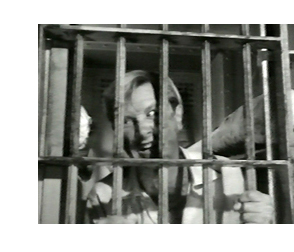
To fully appreciate how unusual films like Try and Get Me! were, one must understand that America's screens in 1950 were flooded with fare promoting family values, military vigilance and the joys of peacetime prosperity. Movies even slightly pessimistic toward American life, even hits like The Asphalt Jungle were considered "unhealthy" by many in the industry. Although the HUAC witch hunters focused mainly on the past affiliations of Hollywood talent (mostly bread & butter creatives unable to fight back), socially critical messages were present in several of their films, themes that conservatives would surely label subversive propaganda. Christ in Concrete and Salt of the Earth were barred from release or boycotted by ultra-conservative organizations. Joseph Losey's The Lawless and Leo Popkin's The Well are about vigilantism and racial/ethnic prejudice. Jules Dassin's Thieves' Highway indicts business as a closed system of rackets; Abraham Polonsky's superb Force of Evil extends that logic to charge that our entire business culture is compromised by corruption. 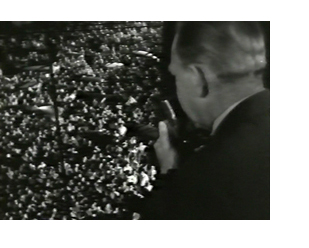
Today's "free" movie screens approach political controversy almost exclusively in documentaries. Few current dramatic films seem as morally courageous or sophisticated as the above examples from the highly politicized postwar years. Dramas even tangentially critical of the war in Iraq haven't been particularly successful. If one can appreciate its political context, Try and Get Me! remains a searing revelation.
Savant has seen Try and Get Me! in a revival print and on the old, good-quality Republic VHS. It may have played once or twice on Turner Classic Movies, but not for many years. Although not considered a core noir title, it's surely more powerful than many of the noir classics, and well worth seeking out.
Footnotes:
1. Judging by the way they integrate with the rest of the movie, Renzo Cesana's scenes were not added as reshoots. 2.Note from "Mac", 7.29.09": Yo, Savant! My compliments on the (as always, excellent and stimulating) review of one of my favorite films noir, Try and Get Me! I also own the much treasured Republic video, and am waiting for a DVD release. I am a transplanted Los Angeleno who happens to be currently living in San Jose. Try and Get Me! had a powerful and unshakable impact on me. After I watched it, I developed somewhat of an obsession regarding the notorious 1933 San Jose lynching that was the basis for the movie. I began my obsession by reading Swift Justice by Harry Farrell, a writer and editor for the San Jose Mercury News. I highly recommend this award-winning report on "murder and vengeance in a California town." Farrell's 1992 tome excited interest in another cinematic retelling (to the consternation of some Pollyannas who prefer that this festering sore on San Jose be forgotten). In 2007, a low-budget, but handsome looking "indie," Valley of the Heart's Delight (which was the pastoral, more enchanting moniker for the then-agricultural Santa Clara Valley, now famous as "Silicon Valley") was shown in Los Gatos, California. Copies of courtroom transcripts of the Brooke Hart murder case were sold in the theatre lobby, as were, I think, copies of Farrell's "definitive study." While driving on Highway 87 and nearing downtown San Jose, I always glance right to see an old relic adorned with the faded name "Hart's," once the premier local department store owned by the father of ill-fated Brooke Hart. I also periodically visit St. James Park, the stage of the tragic drama. Among the lynch mob "cast," according to Farrell: former child movie star Jackie Coogan. Several years ago I had the "good fortune" to actually meet a septuagenarian (the father of a friend) who remembered being brought to the lynching by his grandparents. The hanging of the alleged kidnappers and murderers of Hart the Younger was, he recalled, somewhat of a bizarre, ghastly "family outing" among San Jose locals. If I can ever find a copy of Pagano's novel, I'll continue nourishing my obsession by reading The Condemned. Thanks again, and keep up the splendid job! -- mac |
|||||||||||||||||||
Review Staff | About DVD Talk | Newsletter Subscribe | Join DVD Talk Forum
Copyright © MH Sub I, LLC dba Internet Brands. | Privacy Policy
Subscribe to DVDTalk's Newsletters
|